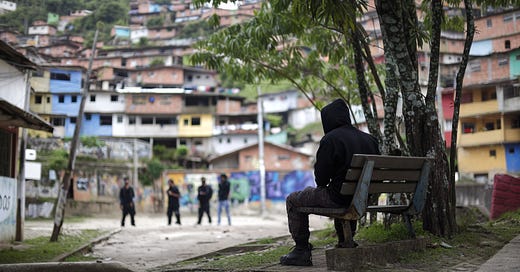Avoiding being targeted by street criminals in foreign or high-risk neighborhoods starts with situational awareness.
Criminals look for easy prey; people who appear lost, distracted, or unfamiliar with their surroundings. To counter this, project confidence and purpose.
Walk with your head up, scan your environment without looking paranoid, and avoid behaviors that signal vulnerability, like checking maps in public, fumbling with your phone, or wearing obvious tourist clothing.
Stick to well-lit, populated areas and be mindful of local scams or criminal tactics. If you blend in with the local dress and mannerisms, you reduce the chance of standing out as a soft target.
A more advanced layer of security is understanding pre-attack indicators and using counter-surveillance techniques.
Criminals often conduct their own form of surveillance before acting; watching potential victims for patterns and weaknesses. Be mindful of individuals lingering nearby, following at an unusual distance, or displaying nervous or unnatural behavior.
Use reflective surfaces like windows to check your six, change your walking route unpredictably, and avoid being boxed in against walls or alleys.
If you suspect you’re being followed, make intentional route changes to force the pursuer to reveal themselves which often makes them end their targeting of you. When necessary, use “hard points” like hotel lobbies, police stations, or crowded areas to deter pursuit.
Have a rapid response plan if things escalate. If approached, maintain a reactionary gap - distance that gives you time to react.
Use verbal de-escalation when possible, but be prepared to take decisive action. If escape isn’t an option, preemptively striking and creating an opportunity to flee is better than waiting to be overwhelmed.
Carrying legal self-defense tools, such as a flashlight, tactical pen, or improvised weapons, can give you an edge.
The goal isn’t to fight but to avoid becoming a victim altogether.




